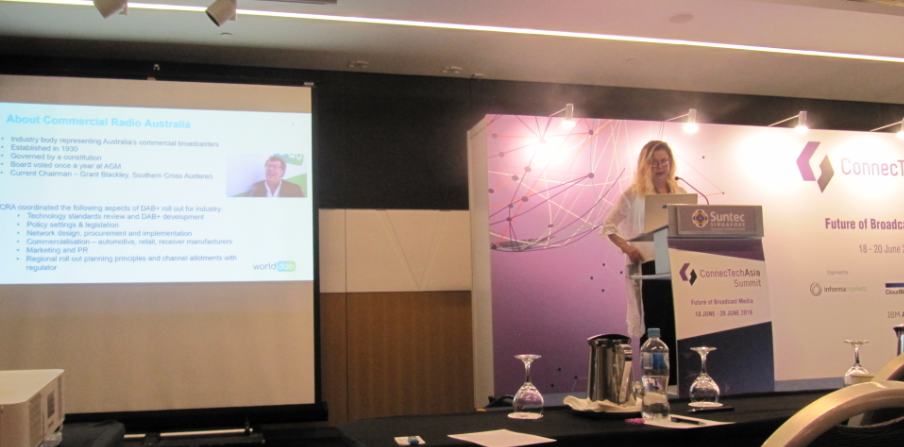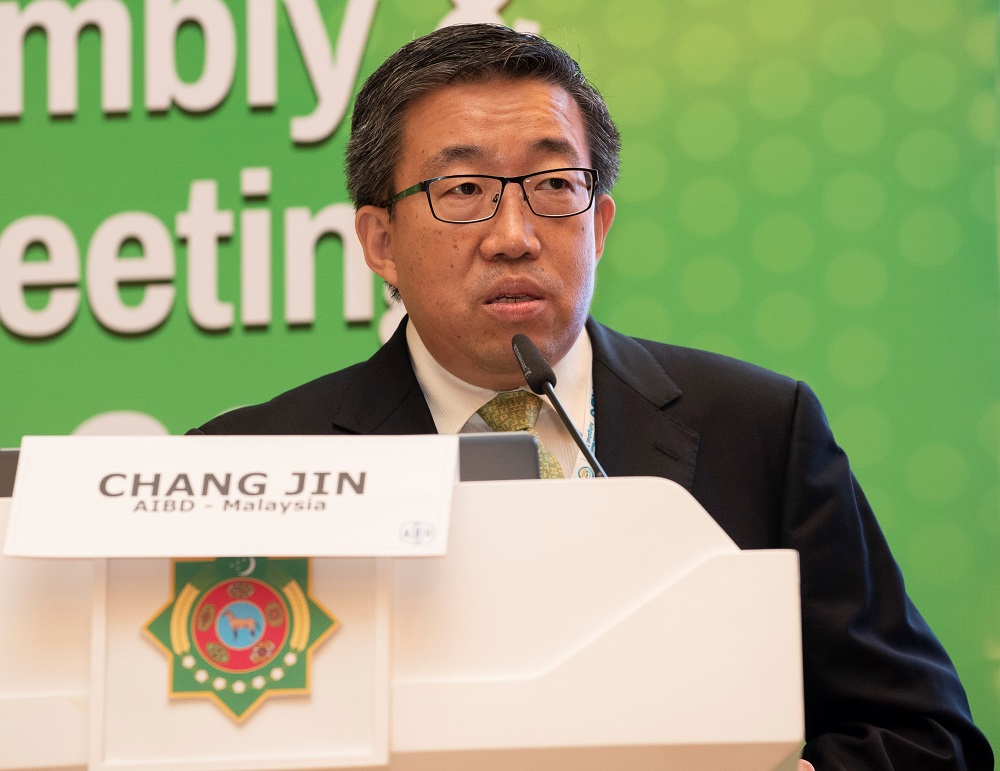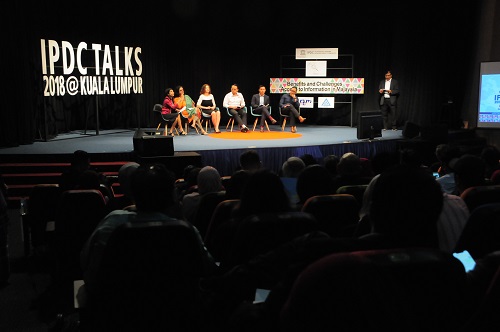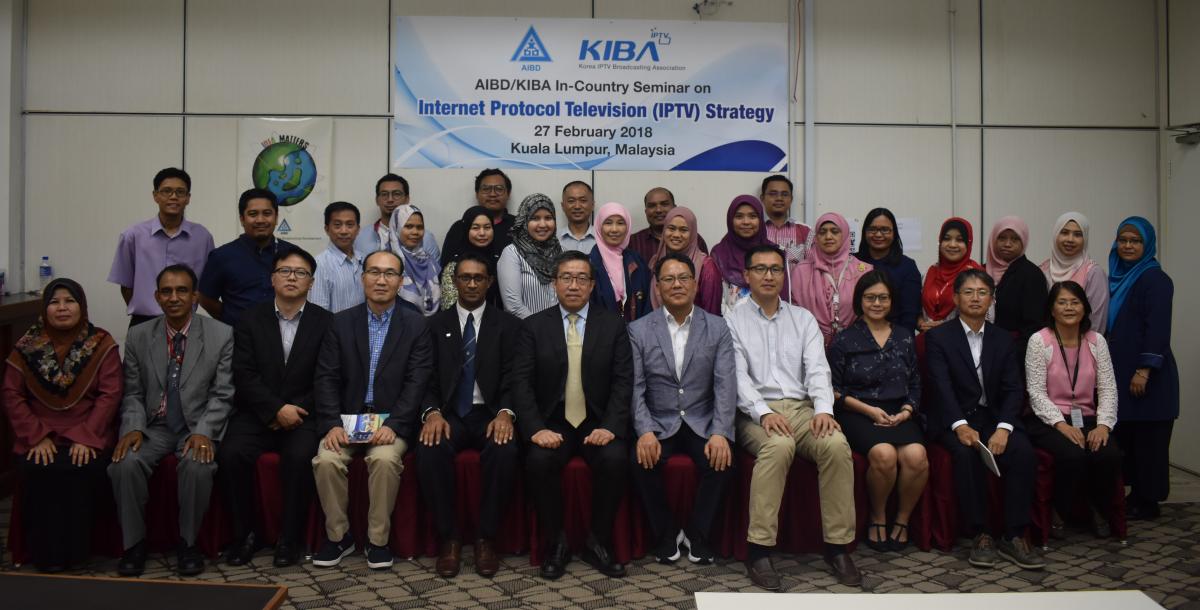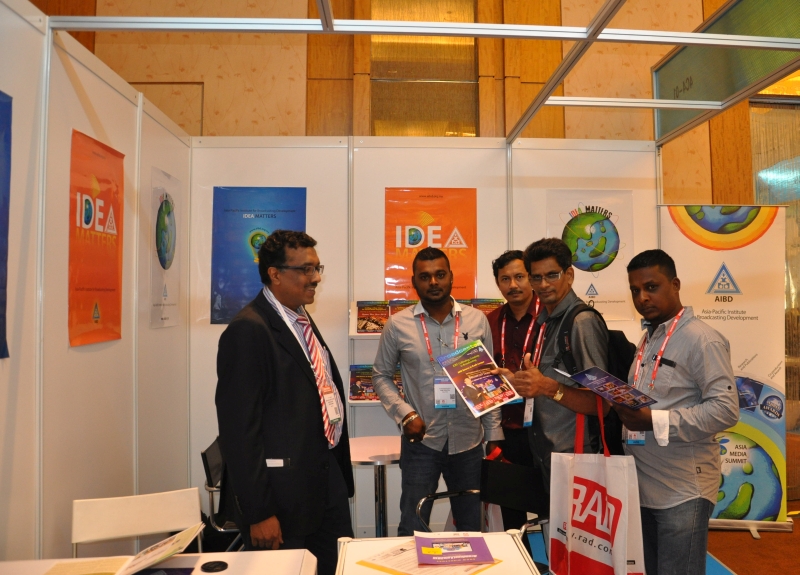Digitization of archives remains a key area of interest for broadcasters as many years of ‘heritage’ content are under threat of being completely lost due to adverse affects of long-term degradation of analogue formats and magnetic media. With new and advanced technologies currently available these important archives can now be converted to digital formats and stored in easily accessible digital libraries that are more robust. The process of digitisation also helps in easy management when organised around a Media Asset Management (MAM) system which improves efficiency in managing the growing content repository and provide better workflow capabilities. Also it helps in creating new revenue streams through content sharing.
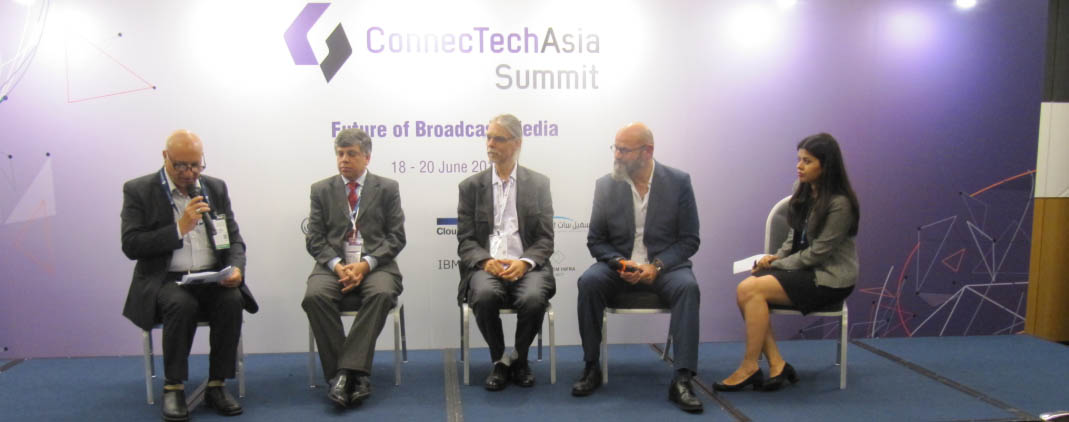
Asia Pacific Institute for Broadcasting Development (AIBD) & Asia Pacific Broadcasting Union (ABU) in collaboration organized a seminar on “Management and Digitisation of Audio Video Archives”. The event was supported by Informa/UBM Singapore and conducted during BroadcastAsia-2019 on 18 June 2019, at Suntec Singapore. The seminar addressed steps necessary towards digitalisation of audiovisual archives, beginning with ways to further extend the life of existing analogue tapes to choosing the appropriate technology, metadata schemas and storage requirements and options. It also looked into implementation of MAM systems, its benefits in content management and workflow. Several Industry leaders in the area of archiving from the region presented and shared their experiences in this challenging and mission critical process.
Moderator Mr. Sharad Sadhu, Media Specialist started the session by providing an overview on ecosystem of archival, need of archiving of content and related activity. Archives have always created descriptive tools to identify and locate documents, as well as to arrange and classify them according to their origin, their functions, their type or their thematic content. The first speaker Mr Aale Raza, Managing Director of Whiteways System presented on Preservation Techniques and management of existing archives. Whiteways design, supply, install, commission the system for restoration (physical & digital), digitisation, archiving and software management of video content owned by the customer. Mr Raza explained about current Whiteways project where an organisation wants to digitize large quantities of audio / video assets. He shared this case study as an example on the steps on how to set up an archival system and manage it. He explained all the steps in managing audio-video archives and also touched upon Digital Right Management (DRM).
Dr.Marc M. Batschkus, Business Development Manager, Archiware talked on topic of Digital Solutions for Preservation and Building a Modern Archiving Systems. He said archive needs support from the organisation, people and processes. The purpose of archive is to free up space on production storage, preserve media and productions for long-time enrich with METADATA. He told that the METADATA are the Key to the archive. He briefed about technical METADATA (e.g. camera, resolution, lens); descriptive METADATA (e.g. description, actors, location) and individual METADATA Schema.
Ms Punam Sharrma, Director of Mediaguru, Singapore presented two success stories her company accomplished in digitizing archives. First project was offered by Government Agency in Middle East in January 2014 which was completed by Mediaguru in five months. The project of Qatar Television: Digitizing Archives for State Broadcaster was one of the largest digitization facility spread across 100,000 square feet enabling ease of access to legacy content having 50+ 2” players, 1”players, U-Matic, DigiBeta, VHS, HDCam, film scanners, cleaners etc. It was digitizing over 100,000 hours of legacy content by providing on-site solution and management of digitizing archive content. On to the next success story of digitizing archives for Rwanda Broadcasting Agency (RBA), Ms Punam told that digital conversion, indexing, cataloguing and management of over 75 thousand hours of audio-visual content was done for RBA and the organisation is planning to establish their VOD platform to distribute all digitized and restored content to the audience.
The moderator conducted a panel discussion with all the speakers on floor and addressed large number of issues on the subject matter and also all the queries raised by the delegates were responded by the panelists satisfactorily. Preserving the string of bits is not the same thing as preserving the audiovisual content since, for the latter, it also requires the technology that allows the data to be interpreted i.e. a computer and software able to convert this string of bits into images and sound. Digital preservation also includes the preservation of the context information, i.e. all the information related to the circumstances of the document’s creation: its authorship, origin, date of creation, etc. Thus digitizing audio-visuals and managing them is very important for preserving our time. The seminar provided useful information to the participants who were in attendance in conjunction with Broadcast Asia.
Seminar @Broadcast Asia 2019 Management & Digitisation of Audio-Video Archives
Digitization of archives remains a key area of interest for
Seminar@BroadcastAsia 2019 : Digital Radio Implementation and Transition Strategy
The development of digital radio has led to improved spectrum
55th ABU General Assembly & Associated Meetings : AIBD Seeks Out More Partnership Opportunities
AIBD Team comprising Mr Chang Jin Director, Mr. J.S. Bae
IPDC talks @ Kuala Lumpur Benefits and Challenges of Access to Information in Malaysia
The IPDC Talks is an initiative of UNESCO’s International Programme
IPDC talks @ Kuala Lumpur Benefits and Challenges of Access to Information in Malaysia
The IPDC Talks is an initiative of UNESCO’s International Programme
Seminar on Internet Protocol Television (IPTV) Strategy
AIBD/KIBA In-Country Seminar on IPTV Strategy -27 February 2018,Kuala Lumpur,
AIBD / KIBA Seminar on Strategy for Internet Protocol Television (IPTV) : Korean Viewpoint ON 26 February 2018 at Kuala Lumpur
Internet Protocol Television (IPTV) is increasingly becoming popular around the
AIBD supports Girls in ICT day
Backed by International Telecommunication Union (ITU), the world celebrates fourth
AIBD at Broadcast Asia 2013
AIBD, as a supporting organisation, participated in Broadcast Asia 2013
AIBD at Broadcast Asia 2015
To keep up with the technological innovations, gain knowledge and empanel more resource persons… AIBD once again took part in Broadcast Asia 2015, which was held between 2 to 5 June in Singapore. The 20th edition of the conference gathered leading broadcast players. It had representation from more than 70 countries and over 16,000 visitors, speakers and exhibitors, all put together.


